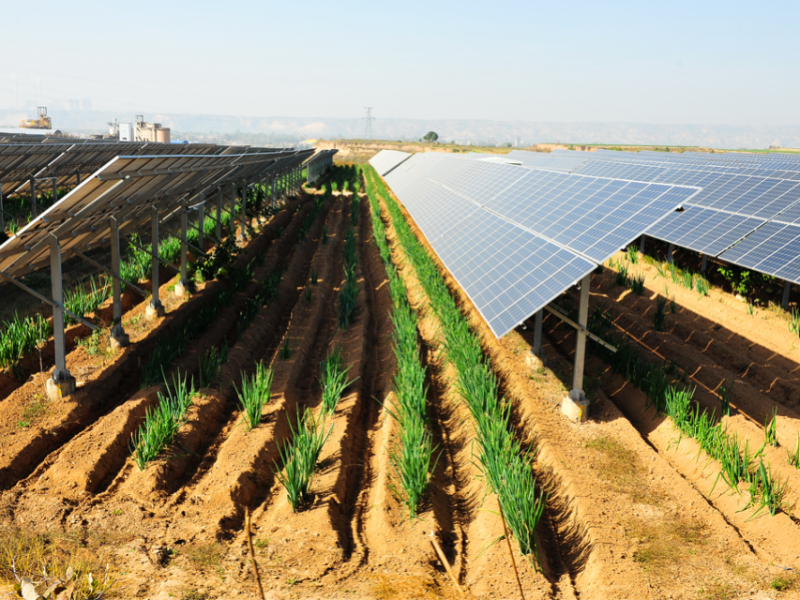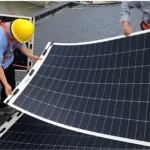Table of Contents
With its rich agricultural heritage and strong commitment to renewable energy, Italy is an ideal candidate for advancing agricultural photovoltaic interconnection projects. This approach not only meets Italy’s energy needs, but also ensures that the land is used for both agricultural production and solar power generation, which is crucial in a densely populated but agriculturally rich country.
At the same time agricultural photovoltaic power generation systems significantly improve land use efficiency by enabling both primary crop production and secondary solar photovoltaic power generation on the same arable land, while optimally exploiting the techno-ecological and techno-economic synergies of the two production systems. This is the main challenge of current PV development in Italy.
Italian Background
Italy is known for its diverse agricultural output, ranging from cereals in the plains to olives and grapes in the hills. Combining photovoltaic (PV) systems with agricultural activities can provide a sustainable model for maximising land use without compromising agricultural productivity. Given Italy’s commitment to reducing greenhouse gas emissions, the total capacity of solar power plants installed in the country today is around 25 gigawatts (GW), a figure that should more than double by 2030 to reach at least 52 GW, according to NIPEC.
What is agrivoltaics?
or livestock activities. It is more than just shared space; it is an integrated solution that can bring benefits to both the energy and agricultural sectors.
The coexistence of agriculture and solar panels ensures an efficient and inclusive use of land, while promoting the rehabilitation of abandoned areas. In this virtuous circle, productivity is not affected in any way (but in some cases, as our tests have shown, it increases) and the same soil is used for two different and complementary purposes

How Agrivoltaics works?
Agrivoltaics, also known as solar sharing or dual land use, is a sustainable approach that combines agriculture with solar energy production. The concept involves installing solar panels above agricultural fields, effectively creating a symbiotic relationship between the two. The solar panels provide shade to the crops below, reducing water evaporation, minimizing temperature fluctuations, and mitigating the impact of extreme weather conditions. Additionally, the panels generate clean energy, contributing to the renewable energy supply. This integration optimizes land use efficiency, as the same parcel of land can produce both food and energy simultaneously.
In agrivoltaic systems, careful planning is required to ensure compatibility between the solar panels and the crops. Factors such as panel height, spacing, and orientation are meticulously considered to maximize sunlight exposure for the plants while still allowing for efficient solar energy generation. The benefits extend beyond environmental sustainability; agrivoltaics can also offer economic advantages to farmers by providing additional revenue streams through renewable energy generation while preserving traditional farming practices. As the demand for both food and clean energy continues to rise, agrivoltaics present a promising solution to meet these needs in a resource-efficient and environmentally friendly manner.
Does the installation of photovoltaic panels on agricultural land create benefits?
In addition to allowing unused or little-used land to be put to new uses, agricultural photovoltaics offer benefits to agriculture and livestock.
Indeed, by creating shade on the subsoil, these panels can save up to 20 per cent of irrigation water and protect crops from heat spikes and heat stress. Installing high-tech sensors in some solar installations can also improve farming operations: by monitoring nutrients in the soil, for example, the amount of water or fertiliser needed can be managed more efficiently, thus improving the competitiveness of the farm.
All of this makes it possible to conserve ecosystems and the biodiversity of pollinating insects, thus improving the local environment and contributing to the social development of the community as a whole. Last but not least, the many benefits of agricultural photovoltaics include the creation of jobs in the agricultural sector (for agronomists, research institutes, farmers, etc.) and the provision of a supplementary source of income for the farmers who provide the land.
How much land do agrivoltaic systems take up?
As of 2021, Italy has about 1 million new photovoltaic systems (agricultural, residential, industrial and tertiary), with ground-mounted systems occupying an area of 152.1 square kilometres, which is only 0.05% of the national total.
Comparing these figures with those of roads, which cover a total area of 9,200 km2 (3%), it is possible to understand how insignificant the impact of photovoltaic panels on land occupation is, especially when we consider all the benefits that these systems bring to the future of the people and the country. It is worth remembering that in Italy the total consumption of artificial land cover is currently around 21,500 km2 .
Opportunities for agricultural PV in Italy
- Enhanced land use: In areas where agricultural land is abundant but farming intensity is low, photovoltaic panels can be installed to produce clean energy while the land continues to be used for less light-sensitive crops. This dual use can optimise the productivity of the land and provide farmers with additional income from energy production.
- Government support: Italy’s renewable energy incentives, including solar feed-in tariffs and tax rebates, are economically attractive to farmers and energy companies investing in agricultural PV systems. These incentives could be adapted to utilise support at local and EU level to specifically encourage the development of agricultural PV projects.
- technological advances: Modern PV technology offers a variety of configurations suitable for agricultural environments, such as elevated panels that allow mechanical movement and sufficient light to reach the crop below. Innovations in PV panel design can further reduce the footprint and environmental impact of these installations.
Challenges and implementation strategies
However, the implementation of agricultural PV systems in Italy faces a number of challenges that need to be managed strategically:
*Land use regulation: Similar to the complexities discussed in the case of mountainous areas, Italy’s strict land use policies can pose significant obstacles. These include the protection of agricultural land, especially designated high-value areas such as vineyards and olive groves. A careful balance must be maintained to respect these regulations while promoting renewable energy.
*Infrastructure issues: The infrastructure required to build PV systems in rural or mountainous areas requires careful planning. Issues such as grid access, maintenance road construction, and visual impacts on scenic areas must be addressed.
*Economic viability: Price fluctuations of PV modules can affect the economic viability of agricultural PV projects. Fixed long-term purchase agreements and government subsidies can mitigate these financial uncertainties.
*Community engagement and education: Engaging with and educating local communities about the benefits of agricultural PV systems is critical to gaining public support. Transparent communication and involving local stakeholders in the planning and implementation process can foster positive relationships and smooth project deployment.
Final thoughtss
For Italy, the agricultural photovoltaic complementary model offers a sustainable solution in line with its agricultural and energy strategy. By addressing the challenges through comprehensive planning and community involvement, Italy can take the lead in integrating solar energy into its rich agricultural landscape, setting a benchmark for other countries with similar geographic and agricultural profiles.







